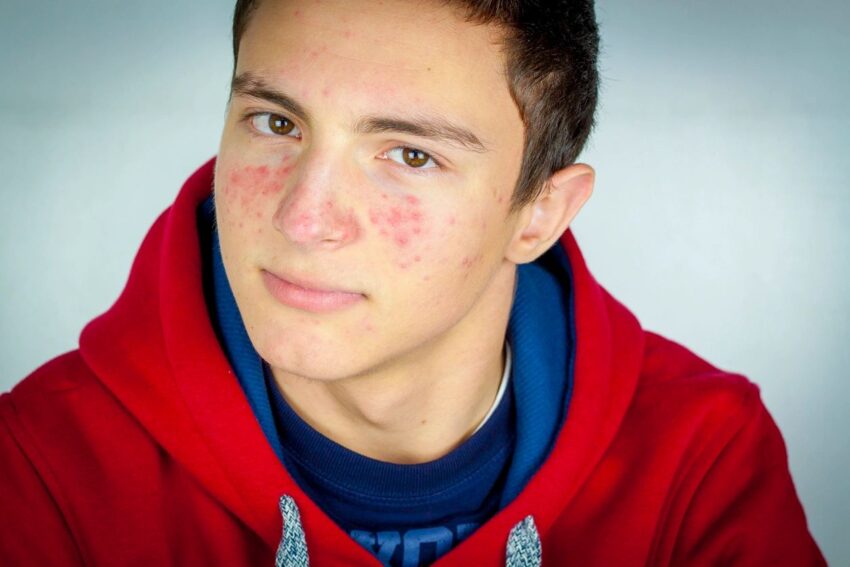One of the worst forms of acne is cystic acne. This comes about when a pore is obstructed by dead cells of the skin, sebum, and other dirt, creating ideal bacteria breeding grounds. Cystic acne occurs when bacteria enter the skin deeply to induce inflammation. It looks like a tender, red bump full of pus.

On the other hand, hormonal acne requires additional treatment to be treated. Fortunately, many ways to handle such breakups are available. Even after their adolescent years, many people appear to experience hollow acne. This can be like blackheads, blackheads and pickles. In certain cases, hormones, hence hormonal acne, are the cause of this.
If somehow you end up with an acne scar, there are ways you can get rid of them. The most recommended solution is to go for laser treatment for acne scars.
Now, let’s learn more about cystic and hormonal acne.
Cystic Acne
Cystic acne normally develops on the forehead, chin, jaw, and cheeks. Four key factors are caused: hormonal imbalance, blockage of hair follicles, bacteria, and overproduction of oils. Hormonal changes, particularly in women, lead to sebum overproduction from the oil gland, which prevents hair follicles and leads to acne. This may also take place in the family genes – some people overproduce oil naturally, which contributes to oily skin.
The food you regularly eat can also play a major role in the breakdown of cystic acne. Dairy and sugary foods can cause skin inflammation and can worsen cystic acne. If you want to avoid this, you might want to start changing your diet.
Treatment Options for Cystic Acne
Cystic acne develops a profound inflammation and fluid-filled cyst that takes a long time to heal. This is red, rendering and high skin bumps on your forehead, chest or back. Cystic acne patients will need treatments containing active ingredients to target bacteria causing acne or procedures using high-grade devices.
Facial Treatments
By facial treatments, this does not include treatments that just slater a facial mask on your face. Facial treatments needed to treat cystic acne may include chemical peeling and the like. This chemical peeling mask is made up of active ingredients that can deeply cleanse and exfoliate the skin. Alpha-hydroxy acids and beta-hydroxy acids are effective ingredients used in those masks. Clindamycin-containing antibiotic creams can also help fight the bacteria that cause acne.
Certain treatments for self-care cannot cure acne. You will need assistance from the experts. They will recommend stronger drugs and methods that can specifically focus deep in the skin on the infection.
Oral Antibiotics
Antibiotics can reduce inflammation. Doctors recommend taking doxycycline, which focuses on bacteria in and around hair follicles infected with cystic acne. It reduces oil intake, which reduces the risk of the formation of cystic acne.
Laser Treatments
Laser treatments target bacteria that cause acne efficiently, reduce inflammation and avoid the return of cystic acne. There’s a high chance that cystic acne leaves behind acne scars due to deep skin lesions. The laser beams will target areas with scars, help pigment break down and improve the development of collagen. This tissue or region contaminated with acne will be absorbed and penetrate under the skin without the heating effect, and the inflammatory effects caused by acne will be repaired.
Hormonal Acne
This hormonal acne is a direct consequence of the body’s levels of oestrogen, testosterone, and androgen. These hormones normally fluctuate for 30 a month. When testosterone is increased, and estrogen is reduced, the skin reacts by releasing more oil. This oversupply of oil induces congestion, which then causes bacteria that cause acne. These hormonal breakouts occur in women of all ages.
Treatment Options for Hormonal Acne
Have a Healthy Diet
Consider reducing the consumption of milk products, processed foods, sugary snacks, red meats and fatty foods. Choose foods that combat inflammation, like fresh products that have a high concentration of antioxidants and fatty acids. Omega-3 can help reduce inflammation. Do this not only for your skin but also for your overall health.
Proper Cleansing is a MUST
Keep pores clear and clean by washing your face twice a day. With this, you can flush out all the grease, dirt and make-up on your face. Using a topical solution with anti-inflammatory and antibacterial properties after washing. For mild to moderate acne, retinoids are effective. This topical solution helps remove dead skin cells from your face so that they will not build up and block your pores.
Is it really possible to treat hormonal acne at home?
Well, as long as the treatment and skin care regimes are consistent, you can say goodbye to your hormonal acne ASAP. Consider always taking care of the skin and know whether a dermatologist has to be seen for treatment. The reason for this is because hormonal acne may tend to come back. Don’t wait until the problems with your hormonal acne escalate and trigger fearful acne marks on your face.


